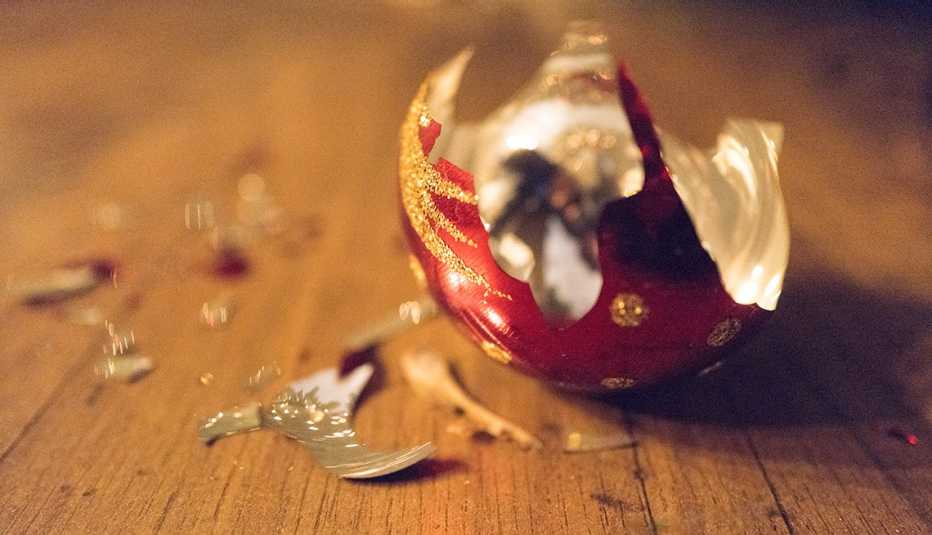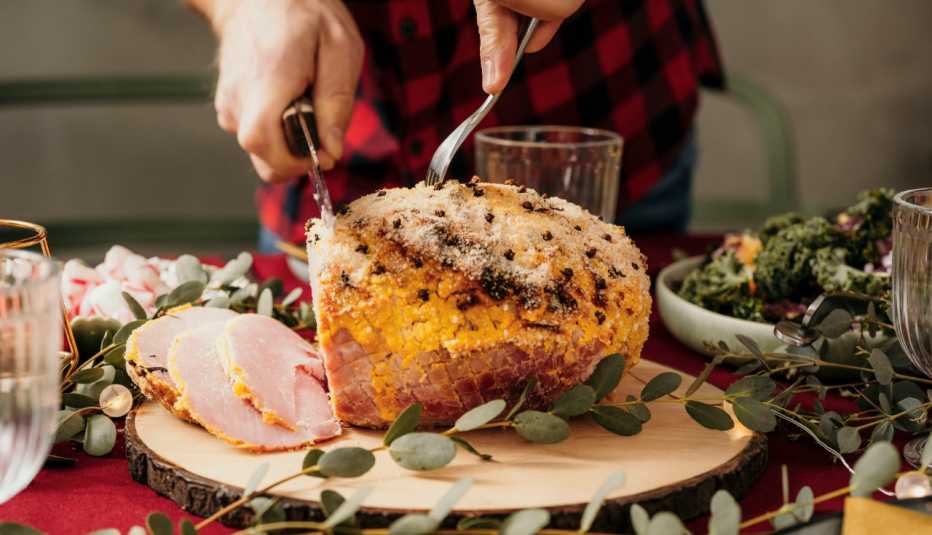Staying Fit


We may chuckle at scenes of Clark Griswold sliding off his roof in National Lampoon's Christmas Vacation each year, but holiday injuries are no joke. Although the season is supposed to be full of joy, celebration and time spent with loved ones, with all the hustle and bustle, things are bound to occasionally go awry.
You accidentally staple your finger with the staple gun when hanging Christmas decorations. A heavy box of ornaments falls off a shelf and lands on your head. Or — heaven forbid — you fall from a ladder while hanging lights along your roofline.


AARP Membership— $12 for your first year when you sign up for Automatic Renewal
Get instant access to members-only products and hundreds of discounts, a free second membership, and a subscription to AARP the Magazine.
All of those are real holiday-related injuries documented by the U.S. Consumer Product Safety Commission (CPSC), which collects data on emergency room visits.
Many holiday-related injuries happen when someone is putting up or taking down decorations, the database shows. In addition to falling off ladders (a lot!), people tend to cut themselves when they handle or step on broken ornaments (another big one) and get poked in the eye by errant pine needles.
One poor fellow in 2021 accidentally ingested a piece of a broken ornament that had fallen into his soup.
Strains and sprains from carrying heavy objects are common, as are complaints of chest pain and other possible symptoms of a heart attack.
“Certainly, we see accidents and illnesses at all times of year, but there are some holiday-specific types of injuries that happen every year in December,” says Thomas Waters, an emergency medicine physician at the Cleveland Clinic. Nearly a third (30 percent) of Americans who celebrate winter holidays say they have been injured while participating in holiday-related activities, according to a 2022 ValuePenguin survey.
Another problem during the holidays is that people tend to put off getting medical attention, because they don’t want to disrupt the festivities or miss out on visiting with family, says Michael D. Levine, associate professor of emergency medicine at UCLA. Unfortunately, delays often lead to worse outcomes, Levine says. Here are eight common holiday-related injuries and accidents, along with real-life examples from the CPSC database and smart advice on how to stay safe.


1. Tripping on toys, cords, wrapping paper or other hazards
Example: A 79-year-old tripped over the cord to a string of Christmas lights and fell.
Adults age 65 and older are already at higher risk of falls, with about 1 in 4 falling each year. And during the holiday season, they have to navigate more obstacles than ever.
People stumble over wrapping paper, decorations, light cords and toys scattered across the floor, says Janice Williams, director of the Injury Prevention Center at Atrium Health Carolinas Medical Center in Charlotte, North Carolina.
Family pets are another hazard. “They tend to dart around in excitement and have been a cause of many older relatives’ falls during the season,” Williams says.
Safety tips: Wear shoes with traction, limit your alcohol intake, and watch your step as you walk. Be especially careful when you’re carrying something that makes it hard to see where you’re going, such as a box of Christmas decorations.


2. Falling from a ladder, step stool or roof while decorating
Example: A 60-year-old man fell off his roof while trying to hang Christmas lights.
On average, about 160 people suffer decorating-related injuries each day during the holiday season, with almost half of the incidents involving falls, according to the CPSC. During the 2022 holiday season, about 14,800 people were treated in hospital emergency rooms for injuries from holiday decorating. More than 40 percent of the injuries were from falling. “People climb up ladders to put up lights or to put up decorations, and they climb higher than they should,” Levine says. “If you’re not steady on your feet at baseline, you don’t belong on a ladder at all.”
Falls from great heights can cause injuries such as broken bones, internal bleeding (especially if you’re on a blood thinner) or spinal damage.
Safety tips: If you use a ladder, make sure it’s on level and firm ground, have a helper hold the ladder, don’t lean too far to either side and avoid stepping on the top three rungs. If you want lights on the roof, consider delegating that task to a younger family member or a professional.







































































More on Health
Do You Have a Stress Fracture?
How to tell if your pain is actually a tiny breakHow Cold Weather Affects the Lungs
Frigid, dry air can make it harder to breathe
6 Common Slow Cooker Mistakes That Could Make You Sick
Avoid foodborne illness with these tips
Recommended for You